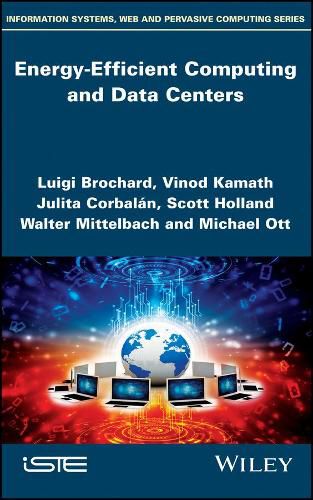Readings Newsletter
Become a Readings Member to make your shopping experience even easier.
Sign in or sign up for free!
You’re not far away from qualifying for FREE standard shipping within Australia
You’ve qualified for FREE standard shipping within Australia
The cart is loading…






Data centers consume roughly 1% of the total electricity demand, while ICT as a whole consumes around 10%. Demand is growing exponentially and, left unchecked, will grow to an estimated increase of 20% or more by 2030.
This book covers the energy consumption and minimization of the different data center components when running real workloads, taking into account the types of instructions executed by the servers. It presents the different air- and liquid-cooled technologies for servers and data centers with some real examples, including waste heat reuse through adsorption chillers, as well as the hardware and software used to measure, model and control energy. It computes and compares the Power Usage Effectiveness and the Total Cost of Ownership of new and existing data centers with different cooling designs, including free cooling and waste heat reuse leading to the Energy Reuse Effectiveness. The book concludes by demonstrating how a well-designed data center reusing waste heat to produce chilled water can reduce energy consumption by roughly 50%, and how renewable energy can be used to create net-zero energy data centers.
$9.00 standard shipping within Australia
FREE standard shipping within Australia for orders over $100.00
Express & International shipping calculated at checkout
Data centers consume roughly 1% of the total electricity demand, while ICT as a whole consumes around 10%. Demand is growing exponentially and, left unchecked, will grow to an estimated increase of 20% or more by 2030.
This book covers the energy consumption and minimization of the different data center components when running real workloads, taking into account the types of instructions executed by the servers. It presents the different air- and liquid-cooled technologies for servers and data centers with some real examples, including waste heat reuse through adsorption chillers, as well as the hardware and software used to measure, model and control energy. It computes and compares the Power Usage Effectiveness and the Total Cost of Ownership of new and existing data centers with different cooling designs, including free cooling and waste heat reuse leading to the Energy Reuse Effectiveness. The book concludes by demonstrating how a well-designed data center reusing waste heat to produce chilled water can reduce energy consumption by roughly 50%, and how renewable energy can be used to create net-zero energy data centers.